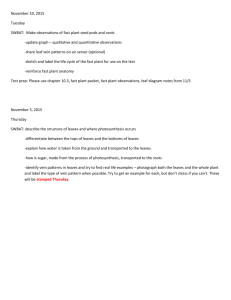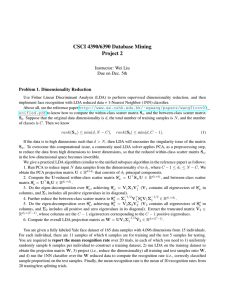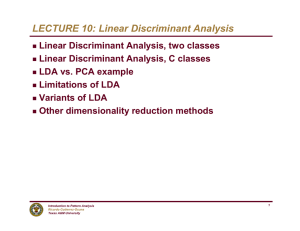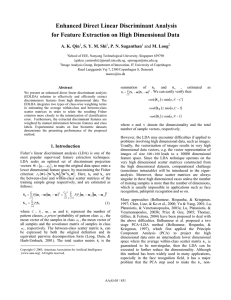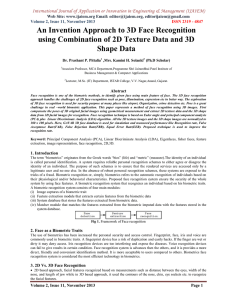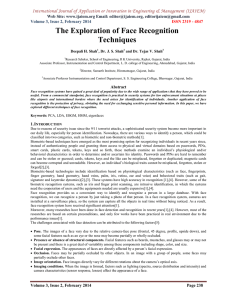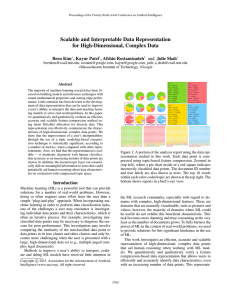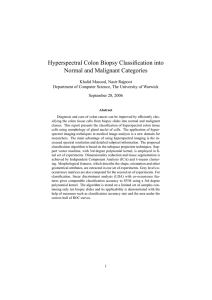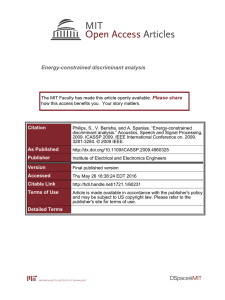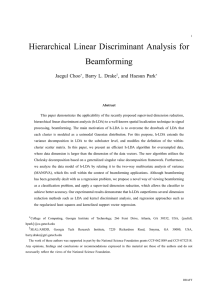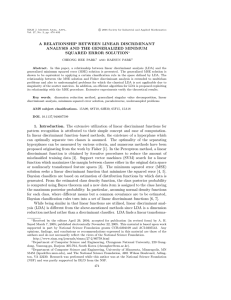Investigating Linear Discriminant Analysis (LDA) on Dorsal Hand Vein Images
advertisement
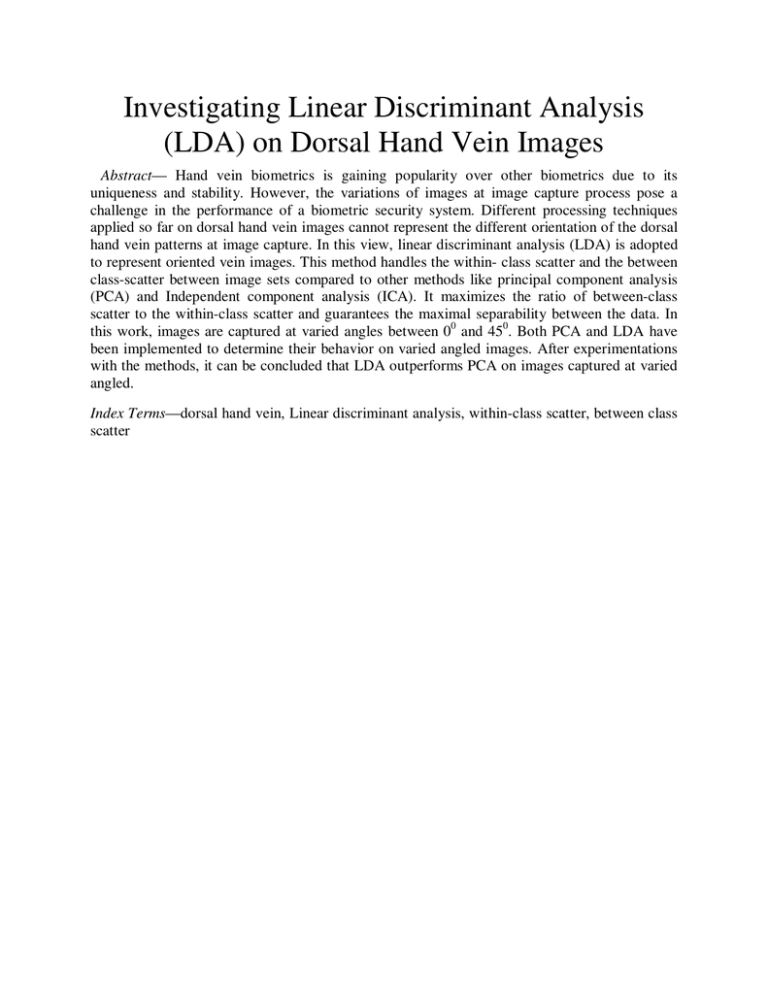
Investigating Linear Discriminant Analysis (LDA) on Dorsal Hand Vein Images Abstract— Hand vein biometrics is gaining popularity over other biometrics due to its uniqueness and stability. However, the variations of images at image capture process pose a challenge in the performance of a biometric security system. Different processing techniques applied so far on dorsal hand vein images cannot represent the different orientation of the dorsal hand vein patterns at image capture. In this view, linear discriminant analysis (LDA) is adopted to represent oriented vein images. This method handles the within- class scatter and the between class-scatter between image sets compared to other methods like principal component analysis (PCA) and Independent component analysis (ICA). It maximizes the ratio of between-class scatter to the within-class scatter and guarantees the maximal separability between the data. In this work, images are captured at varied angles between 00 and 450. Both PCA and LDA have been implemented to determine their behavior on varied angled images. After experimentations with the methods, it can be concluded that LDA outperforms PCA on images captured at varied angled. Index Terms—dorsal hand vein, Linear discriminant analysis, within-class scatter, between class scatter
